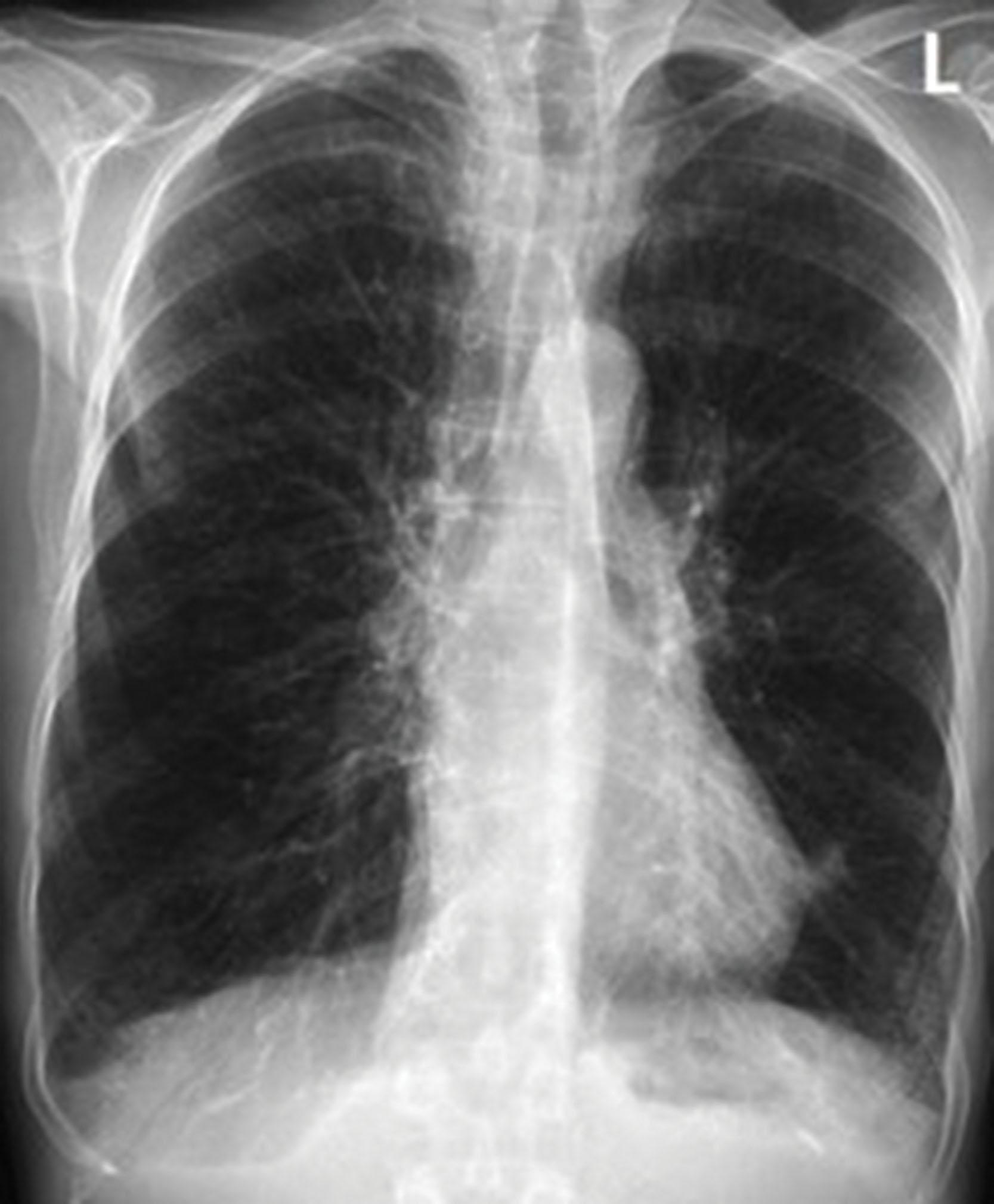Physical Address
304 North Cardinal St.
Dorchester Center, MA 02124
The bedside nurse initiated a rapid response event after the patient was found to be in significant respiratory distress and with oxygen saturation in the 80 s. On prompt arrival of the rapid response team, the patient was found to be a 65-year-old male with an extensive history of smoking, oxygen-dependent chronic obstructive pulmonary disease (COPD), hypertension, and heart failure with a preserved ejection fraction. The patient used 2 L/min (LPM) oxygen (O 2 ) at baseline. He reported progressive shortness of breath and increasing sputum production in the few days before admission and had been using 4 LPM O 2 through a nasal cannula at home. He was admitted earlier in the day after a friend found him confused at home. He was briefly trialed on bilevel positive airway pressure (BiPAP) in the emergency department (ED), which led to improved mental status, and the patient was admitted.
Temperature: 100.4 °F, axillary
Blood Pressure: 155/97 mmHg
Pulse: 101 beats per min (bpm) – regular rhythm.
Respiratory Rate: 30 breaths per min
Pulse Oximetry: 83% on 6 LPM O 2 through nasal canula
A quick exam showed a frail, middle-aged male in respiratory distress. The patient was using accessory muscles of respiration and could not complete a sentence. The lung exam was significant for minimal breath sounds and absence of wheezing. His heart sounds were distant but unremarkable. The patient became increasingly somnolent and difficult to arouse during the evaluation. The rest of his exam was unremarkable.
A cardiac monitor and pads were attached to the patient. Then, 15 LPM of O 2 was administered through a non-rebreather mask which improved oxygen saturation to 96%. Stat arterial blood gas was ordered, which showed a pH of 7.28, pO 2 of 50 mmHg on 15 LPM non-rebreather, pCO 2 of 135 mmHg, lactate of 4.9 mmol/L, and oxygen saturation of 85%. A basic metabolic panel (BMP) drawn simultaneously showed a bicarbonate level of 26 meq/L. The patient was started on BiPAP at inspiratory pressure of 12 cm H 2 O, expiratory pressure of 6 cm H 2 O, and 100% FiO 2 . A stat chest X-ray was obtained, which was negative for any acute pulmonary infiltrates ( Fig. 23.1 ). The patient was ordered nebulizer treatment with ipratropium and albuterol. No glucocorticoids were administered as the patient had already received intravenous (IV) 125 mg methylprednisolone in the ED a few hours earlier. One dose of IV azithromycin was administered, and the patient was transferred to the intensive care unit (ICU) for further care.

Become a Clinical Tree membership for Full access and enjoy Unlimited articles
If you are a member. Log in here